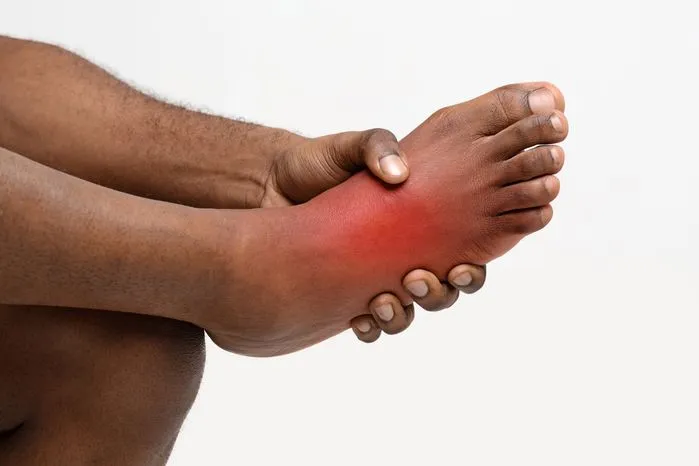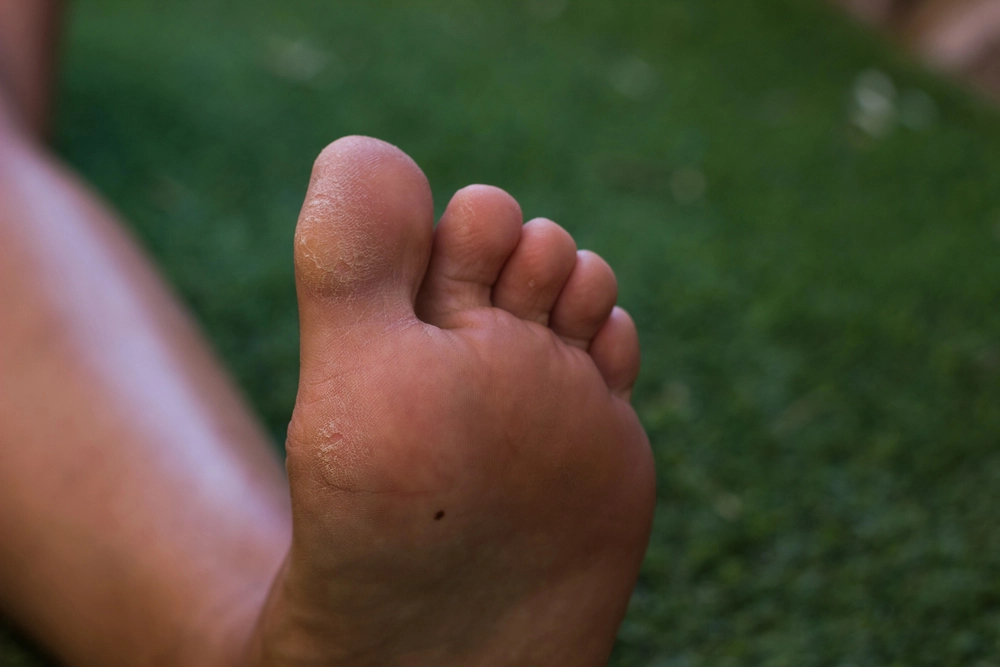
At RelefordInstitute.com, we’ve seen firsthand how stress fractures in the foot often masquerade as minor aches until they escalate into something that sidelines your life. Drawing on decades of clinical experience diagnosing foot injuries in high-performance athletes, frontline workers, and everyday patients, our team created this guide to help you spot the signs before they worsen.
This isn’t a generic list. It’s a practical, diagnostic tool built from real patient outcomes, highlighting subtle red flags, misdiagnoses to avoid, and the decision-making framework we use in our clinic.
Top 5 Takeaways
- Pain that feels minor may be one of the other.
- Watch for key warning signs:
- Don’t rely on one diagnostic tool.
There are other modern tools available today. Ask a medical professional today. - Act early to heal faster.
- Prevent future issues with smart habits.
Understanding Stress Fractures
Stress fractures have a significant impact on orthopedic injuries. They manifest as small cracks in bones, especially in those bearing weight, such as those in the lower limb and foot. Overuse or repetitive activity often results in stress fractures, making athletes like runners or basketball players particularly vulnerable.
Numerous risk factors contribute to stress fracture development. High-intensity activities, inadequate conditioning, and unsuitable footwear can heighten the risk. Also, individuals with bone-weakening conditions like osteoporosis are more susceptible to this type of injury.
Common Signs
Such fractures often go unnoticed, mistaken for other foot-related conditions. Indicators frequently observed are localized pain that escalates with activity, then eases when at rest, swelling either on top of the foot or outside the ankle, sensitivity to touch, with bruising in some instances.
With this knowledge, rehabilitation becomes more effective, limiting further damage while promoting healing. Notably, early diagnosis reduces recovery time and wards off complications.
Detailed Symptoms Breakdown
This discomfort is usually confined to a specific foot area, contrasting with the general foot pain resulting from fatigue or strain. Patients often describe their pain as intensifying during activities that involve weight-bearing, a symptom known as activity aggravation.
Consideration should also be given to swelling in the area affected, frequently accompanied by tenderness. Initial swelling might be minor, but it often increases with time. Tenderness, a characteristic symptom of stress fractures, makes the area extremely sensitive to touch or pressure. Such sensitivity often persists, even when the patient is at rest.
Its signs may not appear immediately after the injury, instead developing gradually over days or weeks. This delayed onset could result in misdiagnosis or treatment delay.
Diagnostic Techniques for Stress Fractures
Doctors begin with an exhaustive physical examination to pinpoint areas of tenderness, swelling, or visible deformities.
In confirming the diagnosis and understanding the injury's severity, imaging techniques are critical. Although X-rays are often used, they might not always detect stress fractures in their early stages. Hence, doctors may employ more advanced techniques. Bone scans also prove to be useful tools in the diagnostic process.
Treatment Options and Recovery Plan
Mainly, treatments aim to alleviate pain, promoting fracture healing. Often, a footrest is advised, along with abstaining from activities that exert pressure on the affected area. In certain instances, foot immobilization through a special boot or brace may be beneficial for bone healing.
Pivotal in the recovery process are rehabilitation exercises. Engaging in physical therapy can contribute to restoring strength, flexibility, and balance, all vital for resuming normal activities.
Healing times can differ greatly, depending heavily on overall health and injury severity. Typically, healing can take several weeks to months.
“Stress fractures rarely shout—they whisper. And in our decades treating foot injuries at Releford Foot and Ankle Institute, it’s those whispers we’ve learned to hear. Many of our patients came in thinking they had a simple sprain or soreness, only for advanced imaging and clinical intuition to reveal a deeper issue. That’s why this guide isn’t just medical theory—it’s a diagnostic roadmap built from the patterns we’ve seen in runners training for marathons, nurses working 12-hour shifts, and everyday people who ‘just kept pushing through.’ If something feels off, trust your instincts—and let the data and real-world experience guide your next step.”
Supporting Facts and Statistics
1. Stress Fractures Are More Common Than You Think
- We frequently see athletes and frontline workers with undiagnosed stress fractures.
- National data shows a 5%–30% annual incidence in athletic and military groups.
- Women and those with lower bone density are at greater risk.
Source: aafp.org
2. The Foot Is a Hot Spot for Injury
- Most fractures we treat involve:
- Metatarsals
- Calcaneus (heel bone)
- Talus, navicular, sesamoids
- Often caused by repetitive stress + poor footwear.
Source: orthoinfo.aaos.org
3. Your Job Could Be a Risk Factor
- It’s not just athletes—many patients work on their feet all day.
- Most common in:
- Nurses, factory workers, warehouse teams, teachers
- In 2018, 56,360 MSD cases were reported in U.S. healthcare workers alone.
Source: bls.gov
Final Thoughts & Opinion
We don’t just look at symptoms—we listen to the story your body is telling. Here’s how we uniquely diagnose and manage foot stress fractures:
- Real-world insight: Based on thousands of cases from athletes, nurses, and everyday patients.
- Subtle pattern recognition: We assess pain behavior under stress, not just imaging results.
- Whole-patient evaluation: We factor in lifestyle, activity patterns, and recurrence risk.
Our Clinical Opinion
If you feel persistent pain, swelling, or tenderness—even if mild—take action early. Why?
- Early detection = faster recovery
- Delays lead to complications and longer healing times
- Your feet bear the load of your life—treat them as a priority, not an afterthought.
Frequently Asked Questions
1. What is a stress fracture in the foot?
A stress fracture is a small, hairline crack in a bone, typically caused by repetitive stress, overuse, or sudden increases in physical activity. It commonly affects the metatarsals, heel (calcaneus), and navicular bones of the foot.
2. What are the most common signs of a stress fracture in the foot?
According to Releford Institute experts, hallmark symptoms include:
- Localized, pinpoint pain that worsens with activity
- Swelling over the fracture site
- Tenderness to touch
- Bruising or discoloration in some cases
- Pain that improves with rest but returns with use.
3. Where do stress fractures most often occur in the foot?
The second and third metatarsal bones are most frequently affected due to their weight-bearing role. Other common locations include the heel bone (calcaneus), navicular, and sesamoid bones near the big toe.
4. How can I tell if my foot pain is a stress fracture and not a sprain?
Stress fracture pain is typically more focused and gradually worsening, while a sprain may result in immediate pain, swelling, and instability. Stress fractures rarely cause joint laxity or “giving out.”
5. What does a stress fracture feel like when walking?
Patients often report a dull ache or sharp pain that intensifies with walking, running, or standing, especially in thin-soled shoes. Pain may be described as stepping on a sharp stone or nail.
6. What are the early warning signs of a foot stress fracture?
Early indicators include:
- Subtle discomfort during high-impact activity
- Increasing soreness over days or weeks
- Tenderness to pressure on a specific bone
Early diagnosis is critical to prevent complete fractures.
7. How is a stress fracture in the foot diagnosed?
The Releford Institute uses a combination of:
- Physical examination and palpation
- X-rays (though not always visible early on)
- MRI or bone scan for definitive diagnosis
- Ultrasound in certain soft-tissue-adjacent fractures
8. Can I walk on a stress fracture if the pain is tolerable?
Walking on a stress fracture is not advised. Even mild weight-bearing can worsen the crack, delay healing, or turn it into a complete break. Use of a walking boot or crutches may be prescribed to offload pressure.
9. How long does it take for a stress fracture to heal?
With proper rest and care, most stress fractures heal in 6–8 weeks. Severe cases or fractures in low-blood-supply areas (like the navicular) may require 10–12 weeks or longer.
10. What risk factors increase the chance of stress fractures?
- Sudden increases in training or exercise
- Wearing improper or unsupportive shoes
- Osteoporosis or vitamin D deficiency
- Flat feet or high arches
- Repetitive high-impact activities (running, jumping)
11. Can stress fractures be prevented?
Yes. The Releford team recommends:
- Gradually increasing activity levels
- Wearing well-cushioned, supportive footwear
- Cross-training with low-impact exercises
- Maintaining proper bone health (calcium, vitamin D)
12. When should I see a podiatrist for suspected stress fracture symptoms?
If you experience persistent localized foot pain that worsens with weight-bearing or activity, especially with swelling or tenderness, consult a podiatrist immediately. Delaying care increases the risk of serious complications.

















